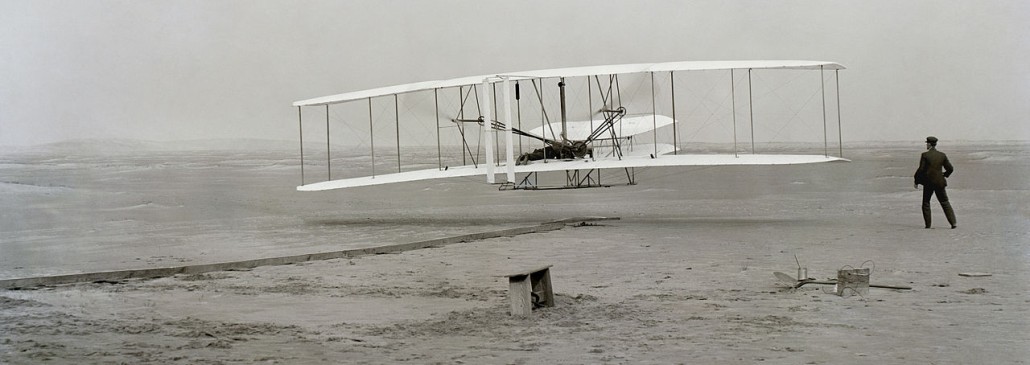To Innovate, or Not to Innovate
There is a steady stream of reports on using innovation to address climate change, economic transformation for clean innovations, innovation policies for climate change (more here), on innovation-encouraging climate policy or social innovation for addressing climate change.
Also at the climate change adaptation project level you can find very interesting innovative approaches. Reading through terminal evaluations of Least Developed Countries Fund (LDCF) projects and programs I identified innovations ranging from the use of (centralized) crop nurseries to supply communities with saplings of useful trees in Mozambique and Samoa, an eco-system based adaptation approach used in Thailand, and the use of an online M&E system in China that allows to track implementation status and quality of progress in near real time. More information on these projects can be found in the LDCF/SCCF Annual Evaluation Report 2014.
The recent program evaluation of the Special Climate Change Fund (SCCF) also concluded that "the SCCF portfolio features innovative ways to cope with the limitations of climate data and modeling and make use of existing scientific knowledge to provide a basis for locally implemented adaptation activities." But it is not only scientific knowledge; SCCF projects in China and Tanzania aimed at mainstreaming climate change adaptation into water management made extensive use of participatory vulnerability assessment methods to incorporate local knowledge into adaptation activity design.
What Makes Something Innovative?
George Damis Yancopoulos, President of Regeneron Laboratories defined innovation as "an approach … that addresses a major imminent want or need that people have, [something] they know they want or need or that they will want or need once provided."
Dr. Makarand Chipalkatti, previous Head of Strategic Innovation Management at Osram Slyvania says "Innovation is a process to bring new ideas, new methods or new products to an organization."
And Peter Drucker - management consultant, educator, and author - wrote that "innovation is the means by which the entrepreneur either creates new wealth-producing resources or endows existing resources with enhanced potential for creating wealth."
From the above we can conclude that innovation is something fresh, new or improved that creates value and fills a major (imminent) need or want. Also, innovation can be as much a process, an approach as it can be a product. Doblin Innovation Consultants explores ten types of innovation grouped in 3 groups; configuration (process), offering (product) and experience.

The first flight of the Wright Flyer I on December 17, 1903.
Was the Wright Brothers first powered airplane flight (or the airplane they built) an innovation? Most people would answer that question with a loud "yes". But the first controlled airship flight took place 9 years earlier in France – and they did manage to get it to a designated landing point. It wasn't the first airplane flight either, which took off 2 years before the Wright Brothers ‘Wright Flyer I' did.
So what makes it an innovation? Well, human controlled and powered flight is something that perhaps had been done before in France and Connecticut, but not in North Carolina. It is as such innovative in its local context. And perhaps the innovation is not their airplane but the invention of three-axis flight control, which had not been used before and which has since revolutionized controlled and powered airplane flight.
Measuring, Identifying Innovation
At a WorldBank results measurement conference in April this year there was a session on innovation and the subject matter experts of IMC Worldwide were sharing their – very sensible – thoughts on innovation. They departed from the 3C innovation principles;
- Innovation is Context-specific (macro-economic conditions for example)
- There are internal Conditions (experience, skills, staff, capacities, etc.)
- A need for Champions or Catalysts of change and commitment from these.
The 3 C's influence scalability of innovations. And they had an interesting innovation formula to share:
I = P + Q + E, meaning that Innovation = The size of the problem + The quality of the innovation + The execution of the innovation.
When it comes to scaling up and out, factors that positively influence scalability are:
- An easy story as to what the problem and the solution are
- The innovation should not be systemic or disruptive, but incremental (a point that perhaps holds true for climate change / development projects, but not for business innovations)
- And there should be clear evidence of value for money.
One common denominator in the earlier mentioned LDCF/SCCF projects is that projects and approaches are regarded as innovative if they are deliberately applied to tackle an issue, and these approaches;
- have not been used before in the project area, and/or
- have not been used before to tackle this specific issue.
Other elements that make an approach innovative is that the approach needs to be;
- widely replicable, which is linked to being locally appropriate from a technological, environmental as well as a socio-economic point of view
- and this should be possible at low economic cost, which links innovation to financial sustainability.
Given that innovation in LDCF/SCCF projects is not a prerequisite - not a goal in itself - but a means it is hard to say something sensible about the contribution of innovation towards the overall project performance. The title of this blog post says in that sense perhaps more about the identification of innovation than it does about innovation as a measurable end goal. Though what all innovations in the LDCF/SCCF projects tend to have in common is captured by Scott Berkun's definition of innovation:
Innovation is significant positive change
And I'd like to leave it to the reader to comment on this blog post, and provide their view on how to put this into measurable terms.
Photo credits: United States Library of Congress for the first flight of the Wright Flyer I on December 17, 1903.



